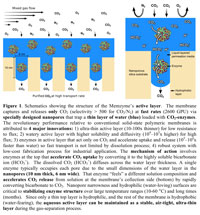
CO2 Memzyme
The CO2 Memzyme is an ultra-thin membrane that is the first cost-effective technology for carbon dioxide separation and capture to meet and exceed the Department of Energy’s (DOE) targets for helping to reduce the threat of climate change. The memzyme surpasses earlier polymeric membrane technology by capturing more carbon dioxide, faster, from a gas mixture while simultaneously producing nearly pure carbon dioxide (99 percent) for industrial reuse. Jointly developed by Sandia and the University of New Mexico, CO2 Memzyme also won the R&D 100 competition’s Green Technology Special Recognition Gold Award. Sandia’s Laboratory Directed Research and Development (LDRD) office provided initial funding for this project. DOE’s Basic Energy Sciences, the Defense Threat Reduction Agency’s Joint Science and Technology Office and the Air Force Office of Scientific Research also provided funding.
» Watch video
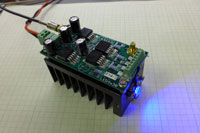
LED Pulser
The LED Pulser uses light-emitting diodes instead of expensive lasers to provide high-brightness, rapidly pulsed, multicolor light for scientific, industrial or commercial uses. The Pulser’s small LED (light-emitting diode) source permits better detection of ignition via high-speed imaging and has resulted in better understanding of injection, combustion, and emissions formation in diesel engines. The work was supported by DOE’s Vehicle Technologies Office.
» Watch video
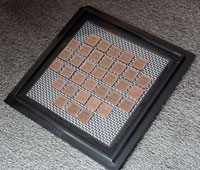
Integrated Circuit Identification
The IC ID or Integrated Circuit Identification authenticates integrated circuits, detects counterfeit electronics, and verifies individuals’ identities and their transactions using a unique device signature and cryptographically secure challenge-response protocol. Early funding was provided by Sandia’s LDRD program.
» Watch video
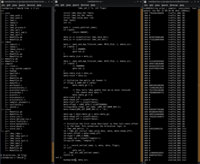
Lightweight Distributed Metric Service
The Lightweight Distributed Metric Service (LDMS) monitoring software provides detailed awareness of the system-wide performance of high-performance computers and applications in production environments. LDMS was developed by Sandia and Open Grid Computing Inc. of Austin, Texas. Early funding was provided by the LDRD program, with later investments by DOE.
» Watch video
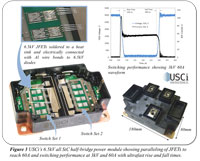
Silicon Carbide JFET Switch
The 6.5kV Enhancement-Mode Silicon Carbide JFET Switch is a low-loss power switch based on a novel silicon carbide junction field-effect transistor. It is expected to improve the efficiency of next-generation power conversion systems used in energy storage, renewable energy, and military applications, as well as data center power distributions. Developers of the switch include United Silicon Carbide Inc., Sandia, and DOE’s Office of Electricity Delivery and Energy Reliability, Energy Storage Program.
» Watch video